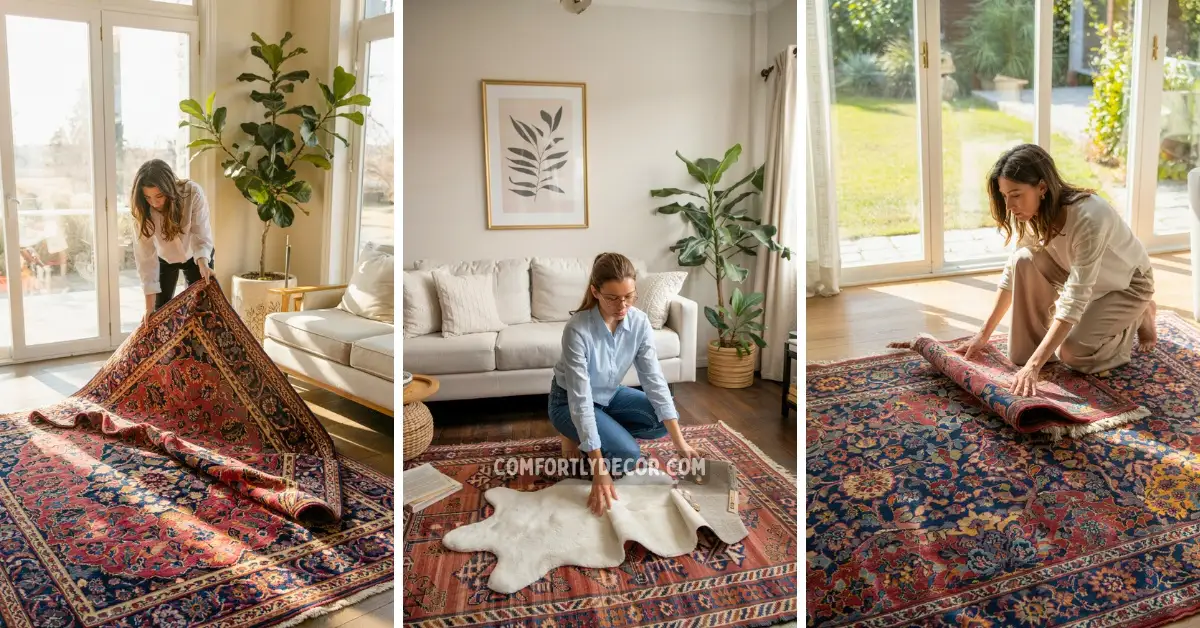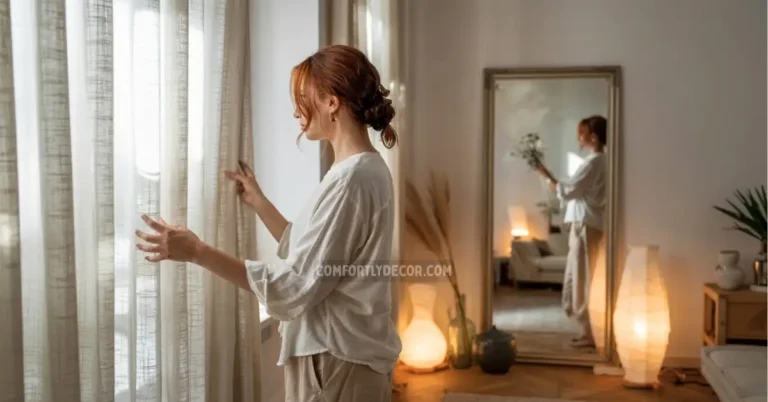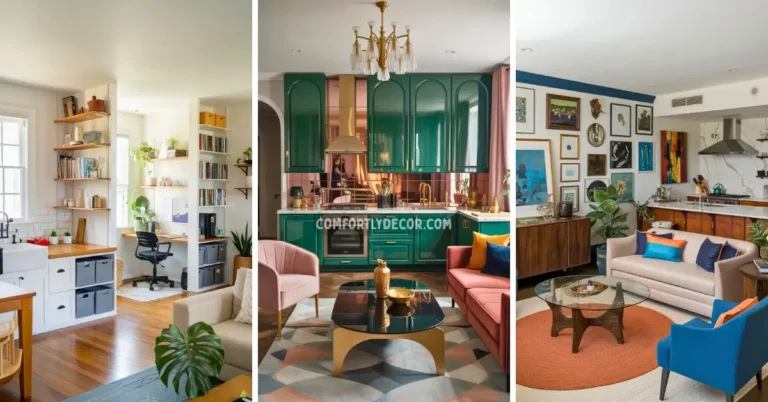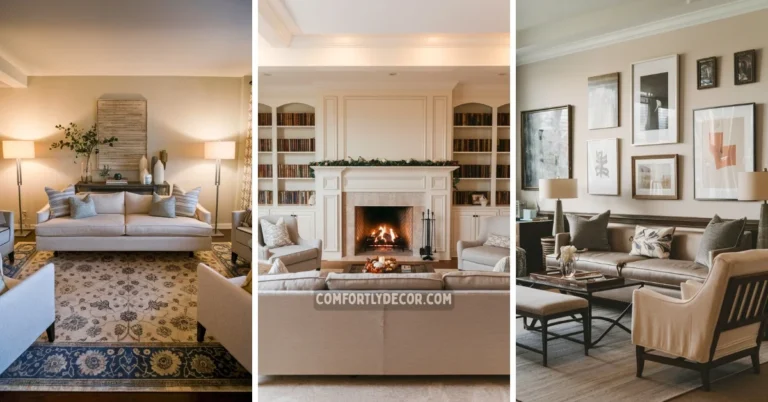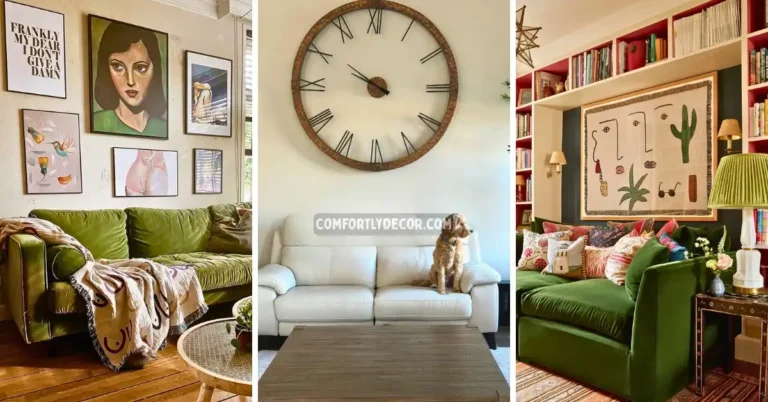How to Place A Rug in A Living Room Without Ruining Your Space
Rugs are one thing that can single-handedly define a living room by pulling all your furniture together into one big happy family. But if you get the rug placement wrong, your entire space can feel off. It is a design crime I see all the time, and honestly, it keeps me up at night. I have spent years arranging and rearranging living rooms, and I have learned that rug placement is an art but it is an art with rules.
So, if you have ever stood in your living room, staring at a rug that just looks wrong then this guide is for you. I am going to walk you through everything you need to know about how to place a rug in a living room so it looks intentional, stylish, and anything but awkward.
The Golden Rules of Rug Placement
Before getting into specifics, let me cover the three main approaches to rug placement. Think of these as go-to formulas. Almost every well-designed living room follows one of them.
1. Front Legs On, Back Legs Off
My absolute favorite, the “business in the front, party in the back” of interior design. Place the rug so the front two legs of sofa and chairs rest on it, while the back legs stay on the floor.
It’s a classic for a reason. This technique visually connects the furniture, creating a defined conversation area without needing a colossal, room-swallowing rug. It is the perfect compromise for most living rooms.
2. All Legs On the Rug
If you want a more formal or cohesive look and have the space for it, go with the “all in” approach. Here, all furniture, including sofas and chairs, sits completely on the rug.
This works beautifully in large, open-concept spaces because it creates a distinct “room within a room.” But let me warn you, you need a seriously big rug for this to work. A small one will just make your furniture look like it is stranded on a tiny island.
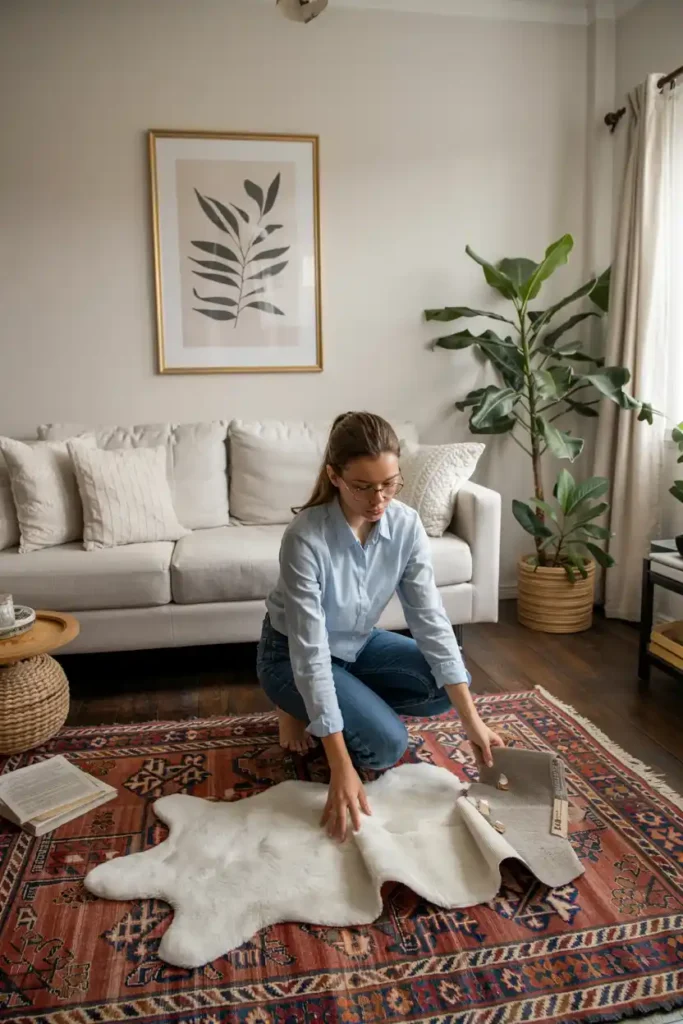
3. No Legs On the Rug (Use With Caution!)
I am including this one with a huge asterisk. This is for small accent rugs only. Think of a bold, patterned rug placed under a coffee table, with all furniture surrounding it. No legs from your main seating touch the rug.
This can work if the rug is purely decorative, but it is a tricky look to pull off. More often than not, it just makes the rug look like an afterthought. My personal opinion? Avoid this unless you are a seasoned pro or just really love chaos.
Why Rug Size Is Everything
I cannot stress this enough: the size of your rug matters more than you think. A rug that is too small is probably the most common design mistake I see. It makes the room feel smaller and disjointed, like your furniture is shrinking away from itself.

Here are some quick pointers for standard sofa sizes:
- For a standard 7-foot sofa, I’d look at an 8’x10′ rug. This gives you enough room to anchor the sofa and a couple of accent chairs.
- For a sectional, you’ll likely need a 9’x12′ rug or even larger. The goal is to have the rug extend past the furniture on all sides.
The big mistake to avoid is the “floating rug”. A tiny rug sitting in the middle of the room with no furniture touching it. It just looks lonely. Your rug should connect your furniture and not float away from it.
Placement Based on Your Furniture
Okay, let us get practical. How you place your rug depends entirely on your living room’s layout.
Layout 1: Sofa and Chairs
Got a classic sofa-and-chairs setup? Perfect. I almost always recommend the front-legs-on method here.
Place your rug so that it runs under the front legs of your sofa. Then, position your chairs so their front legs are also on the rug. This creates a unified seating area that feels inviting and intentional. It’s a foolproof way to make the space feel connected.
Layout 2: The Sectional Sofa
Sectionals are cozy, but they can be tricky. My number one rule for sectionals is that the rug should be large enough to extend beyond the chaise and the other end of the sofa.
Ideally, you want at least the front legs of the entire sectional on the rug. If the rug is too small, you end up with a weird situation where one part of the sectional is on the rug and the other isn’t. It completely throws off the balance of the room. When in doubt, go bigger.
Layout 3: Just a Coffee Table
If you’re using a small rug as a central accent piece, the key is spacing. You should have at least 18 inches of bare floor between the rug and the walls. This creates a visual border and prevents the room from feeling cramped. The furniture should then sit around the rug, creating a defined, cozy nook.
Let’s Talk Style Variations
The rules are a great starting point, but design is also about breaking them—stylishly, of course.
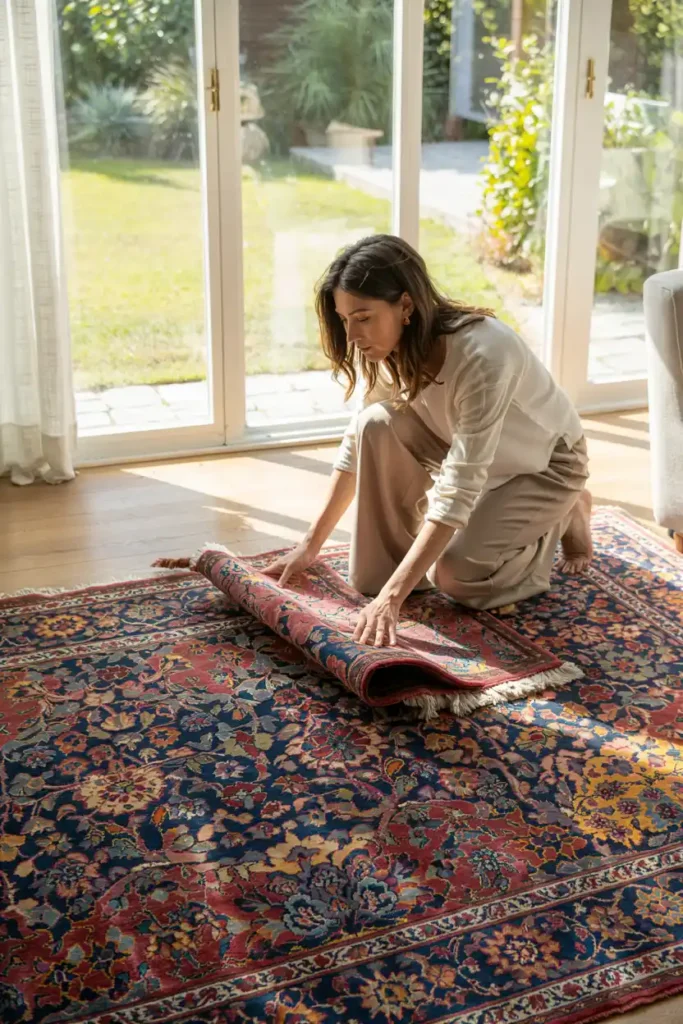
Layering Rugs:
I absolutely love this trend. It adds so much texture and personality. Start with a large, neutral jute or sisal rug that covers most of the seating area. Then, layer a smaller, more vibrant or patterned rug on top.
It’s a great way to add a pop of color without committing to a massive, expensive patterned rug.
Round Rugs:
Ever thought about a round rug? They work wonders in smaller or more casual living rooms. A round rug can soften all the sharp angles of your furniture and create a really inviting, less formal vibe. I love placing one in a cozy reading corner with a single accent chair.
Bold vs. Neutral Patterns:
Your rug is a huge opportunity to inject style. A bold, geometric, or floral rug can act as the “art” for your floor. If you go this route, I suggest keeping the furniture relatively neutral to let the rug shine.
On the flip side, a neutral rug with a subtle texture provides a calming foundation that allows your furniture and other decor to take center stage.
Your Final Takeaway
Think of your living room rug as the frame for your furniture. Just as a frame complements a piece of art, your rug should complement and unify your living room setup. The right rug placement pulls everything together, defines your space, and makes your room feel complete. The wrong placement… well, let’s not even go there.
So take a moment, look at your living room, and ask yourself: is my rug doing its job? If not, a simple adjustment might be all you need to transform your space completely.
FAQs

I am Mindy Medford, a home décor, paint, and design specialist with over a decade of hands-on experience transforming ordinary spaces into cozy, personality-packed havens. Since 2013, I have been helping homeowners discover the art of beautiful yet practical design. I share my love for color, texture, and layout—making stylish interiors & exteriors feel achievable for everyone. Whether it’s picking the perfect paint shade or reimagining a small space, I’m here to guide and inspire.

